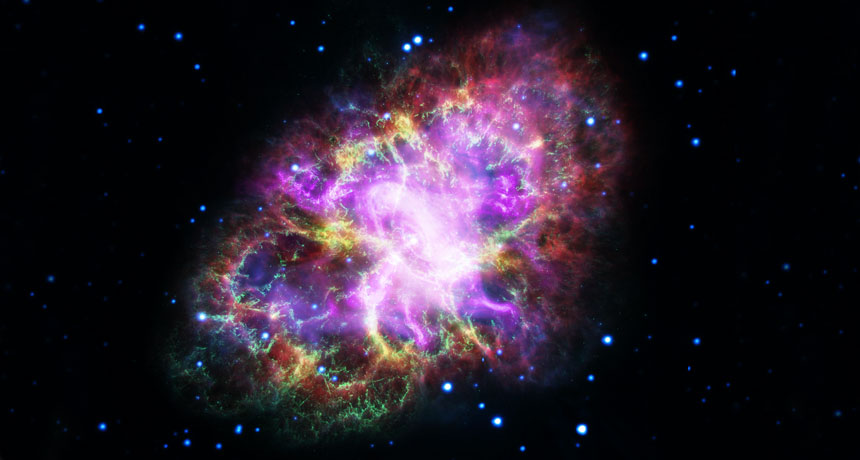The highest-energy photons ever seen hail from the Crab Nebula
Some of the supernova remnant’s gamma rays have more than 100 trillion electron volts of energy

CRAB FISHING Scientists hunting for high-energy photons raining down on Earth from space have found the most energetic light yet detected. It’s from the Crab Nebula, a remnant of an exploded star (shown in an image combining light seen by multiple telescopes).
NASA, ESA, NRAO, AUI, NSF and G. Dubner/University of Buenos Aires





